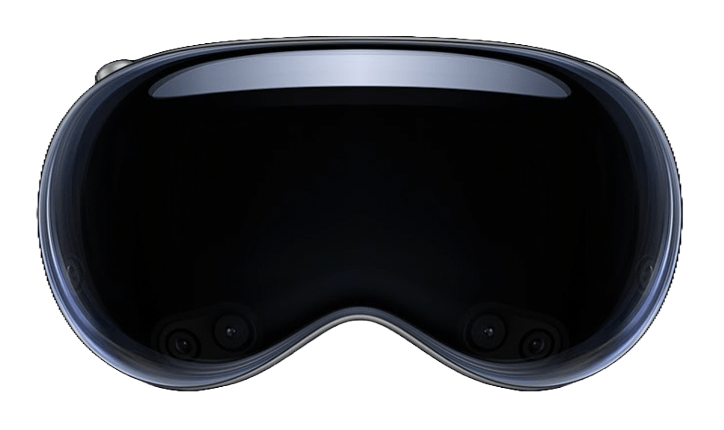Apple Vision Pro
Product Deep Dive & Customer Research
Amit Yalwar

The Core Vision
- Tim Cook, 2020: “I think [AR is] something that doesn’t isolate people. We can use it to enhance our discussion, not substitute it for human connection, which I’ve always deeply worried about in some of the other technologies.”
- "The Most Advanced Personal Electronics Device Ever" - Apple WWDC 2023
Create a true AR experience, redefining personal computing and entertainment.
The Hardware Advantage
- The R1 Processor: Tailored for real-time processing, enabling the 12ms latency in pass-through and solving the digital motion sickness problem
- Apple M series chips: Industry leading in processing power and efficiency to handle all the time-shared operating system tasks
- High-Resolution Displays: 23 million pixels for uncanny immersion leveraging the processing chops of Apple Silicon
- High definition, ultra low latency pass-through is now table stakes for spatial computing - Apple is uniquely positioned for it
The Software Advantage
- visionOS: Designed from the ground up for spatial computing, leveraging decades of experience building macOS, iOS and iPadOS
- Dynamic UX: Eye tracking, Multi-app 3D engine, Dynamic Foveated Rendering
- Real-Time Execution Engine for a near-perfect AR experience
- Competitors using Android based OS (Meta, Magic, etc) are far from achieving visionOS's performance and functionality critical for spatial computing
Content & Services Advantage
- Apple TV+ Immersive Experiences: Next generation entertainment experiences. Will likely expand to immersive live sports (MLS deal) and others
- Acquisitions and Partnerships: Acquisition of Mira, partnerships with Disney, Unity and other long-time Apple allies for scaling content and gaming
- Integration with Apple Ecosystem: Seamless compatibility with iCloud, Apple Photos, and other Apple services, enriching the experience with familiar content.
- Apple's ecosystem of content and services are crucial to the value proposition. Apple TV+ will likely be a key enabler for mass adoption.
Pricing Strategy
- The Apple Vision Pro's pricing of $3,500 has strategically anchored the market to higher price range for these products
- Creates space for launching non-Pro models in $2000-$3000 range for the broader market, allowing "experience effects" to kick in for better margins
- Competitors cannot build products of similar performance and functionality at Apple's price point in the short-term
- Apple Vision Pro has elevated the consumer expectation to beyond what competitors are capable of achieving in the short-term
Vision Pro Customer Research
Source: reddit.com/r/VisionPro

Vision Pro Customer Research
Source: my friends who bought the Vision Pro
Themes for improvement from User Interviews (n=3)
- Want more Immersive Video originals
- Netflix/YouTube app support for offline video viewing on flights
- Multiple profiles or at least remember a few guest mode calibrations
- Ergonomic enhancements with the default band; gets heavy after a while
- The band that goes on top on the head feels better but messes up the hair
- Multiple instances of apps
visionOS 2.0
Source: my friends who bought the Vision Pro
Major features prioritized by customer research and alignment with the core vision
-
Save Guest profiles
- Potentially limit it to just the iCloud+ family members
-
Customizable Workspaces
- Workspaces that are tailored to different activities or tasks, such as work, gaming, fitness, or relaxation
- Digital twins of other Apple devices
- Content/App availability seems to the biggest customer concern area. A virtual iPhone/iPad can solve this problem.
Product Challenges
- Making the Vision Pro feel less like a "Solo" experience, which is the crux of the core vision
- Defining the primary use cases and value proposition to both consumers and enterprise customers
- Developer Relations, notably Netflix, YouTube, Spotify and others missing on visionOS
- Current pricing appeals mostly just to the early adopters
Apple Vision Pro
By Amit Yalwar
Apple Vision Pro
- 7

